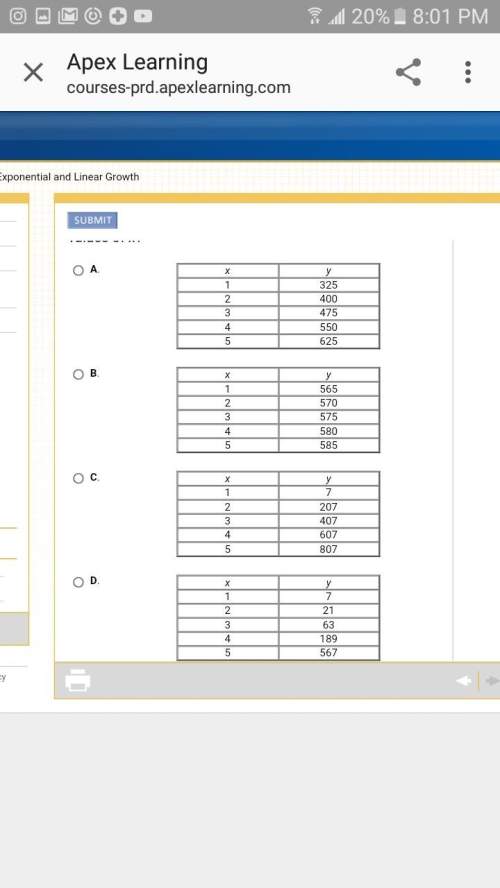continuous functions:
a function is said to be continuous , if it is an increasing function or decreasing function or both increasing and decreasing function.
if function is increasing continuous function
then for, [tex]x_{1}> x_{2}, then , f(x_{1}) > f(x_{2})[/tex]
if function is decreasing continuous function
then for, [tex]x_{1}> x_{2}, then , f(x_{1}) < f(x_{2})[/tex]
so , in the situation described,for which functions will the y-values be the greatest for every large values of x describes continuous increasing function.as i have defined continuous increasing function
the function having larger slope, will have larger y values , for larger values of x .
slope between two points (a,b) and (p,q) is given by :
m=[tex]\frac{b-q}{a-p}[/tex]
slope in option 1 =75
slope in option 2 =5
slope in option 3 = 200
as the fourth option is a geometric progression, common ratio being 3. as x value increases by 1 , y value increases 3 times.the function can be written as: y=7.[tex]3^n[/tex] [n=0,1,2,3]
option (3) and option (4) is right choice.in each case y value increases with increase in value of x.
